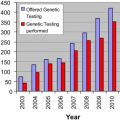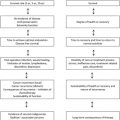
In this issue of Surgical Oncology Clinics of North America , we sought to highlight many of these efforts, as well as present novel ways to think about and measure cancer care quality, particularly as it relates to surgery. In addition, we aimed to present relevant topics that are broadly applicable to all of surgical oncology, as opposed to focusing on specific disease sites or issues not easily generalizable.
As such, we were extremely fortunate to have leading experts present their work on a variety of diverse topics. The first five articles in this issue relate to the measurement of cancer care quality including current quality initiatives in surgical oncology, monitoring the delivery of cancer care, variation in mortality after high-risk cancer surgery, readmission as a quality indicator, lymph node staging, racial disparities, and the use of prediction tools. The remaining articles are a collage of timely pieces, including the importance of clinical trials in surgical oncology, intraoperative patient safety, appropriateness of cancer care, collaboration with the community cancer center, and value-based cancer care. Although it was not possible to fully capture all aspects of surgical oncology outcomes research, this issue of the Surgical Oncology Clinics will hopefully offer a unique perspective that will be both interesting and informative.
Finally, we would like to sincerely thank the authors for their time and effort. Your hard work made this possible. I would also like to thank Nicholas Petrelli for the invitation to put this issue together, and last but not least, his editorial staff for their expertise and support.
Stay updated, free articles. Join our Telegram channel

Full access? Get Clinical Tree






